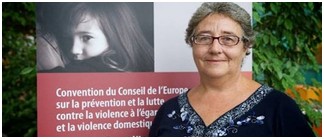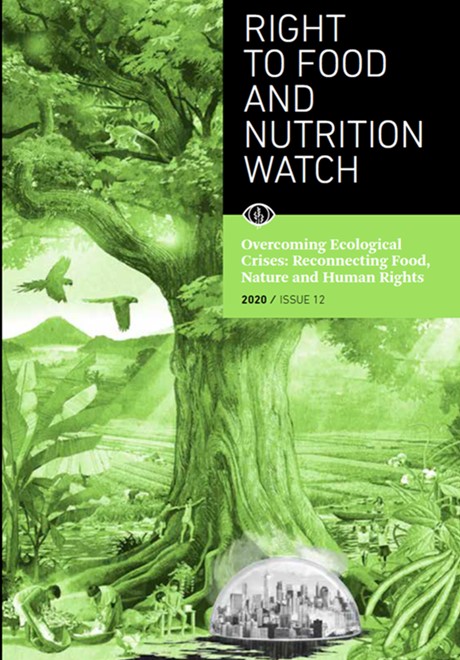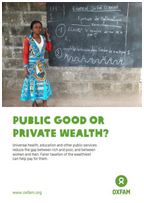COVID-19 Has Not Stopped Sexual Harassment at Work: It Has Just Moved Online
Извор: WUNRN – 03.10.2020

Has workplace sexual harassment been curtailed by COVID-19? Advocates say no: for many women it has shifted online instead. Illustration by: Inge Snip.
When a high-profile journalist approached Emily* on Twitter with an offer of work, she recalls being “a bit star-struck”. Their direct messages and email conversations could be “very flirtatious”, but Emily continued talking to him as “I thought it might lead to something more, workwise.”
It wasn’t long before “flirtatious” became something else, however. “There was a demanding level of banter to keep up with, and I found it really stressful,” Emily told openDemocracy. “Then one evening he suggested sending me a picture of himself naked from his workplace.”
Emily told him “no”, but her refusal appeared to sour the relationship. “It all became very awkward,” she explained. “He got very defensive. He ended up being quite hostile, though I apologised over and over as though it had been my fault. The more I tried to take responsibility, the worse it became. Then the work stopped coming. I felt like I’d failed some kind of test.”
Working online, from home, deepened Emily’s distress. “What made it so insidious was I couldn’t get away. I ended up in the garden, shaking, unable to speak. I had really bad panic attacks… He was so powerful, and I was scared of what he would do next. I was afraid to look at my phone in case he had tried to contact me again. I couldn’t bear to go back in the house.”
What happened to Emily occurred before the coronavirus pandemic, and before the lockdowns and restrictions that have led to even more workers, in the media and elsewhere, doing their jobs remotely. It happened a few years ago, amid the #MeToo movement that exposed widespread sexual harassment in the entertainment and media world.
Has such workplace sexual harassment been curtailed by COVID-19? You might think so, given the widespread closure of offices. But equality advocates say such behaviour also existed online before the pandemic, and has become even more prevalent now. Precarious freelancers are particularly vulnerable, with less power and fewer options for recourse.
“What made it so insidious was I couldn’t get away. I ended up in the garden, shaking, unable to speak.”
“Misogyny is adaptable,” said Deeba Syed, senior legal officer at the UK charity Rights Of Women, which runs a legal advice line for women about sexual harassment. “Working from home meant abusers had to adapt,” she told openDemocracy, describing some of the recent calls they’ve received.
Some women said that harassers have found their personal phone numbers, or turned up outside their homes, “really invading their personal space,” said Syed. “Women who thought they were going to get a break from this kind of harassment were getting it more.”
Other examples of online harassment include male managers telling women to attend video calls wearing more make-up and “sexier” clothing.
The move to working from home has also given harassers new tools to indulge in “less favourable treatment and victimisation”, Syed warns. These are legal terms that describe the negative treatment that individuals may face in the aftermath of harassment: for instance, retaliation for making a complaint or, as in Emily’s case, for spurning a sexual advance.
Syed believes such retaliation is “easier” online “because there are fewer people to witness it. We had a woman telling us she was on a Zoom call and every time she spoke, her perpetrator muted her. Or women not being sent invites to a meeting. That kind of exclusion and ostracisation happens anyway, but is easier to do when it’s not face to face.”
Global problems
Like the pandemic, these problems are global. In India, some companies have reportedly instituted new rules as a result, to prevent “inappropriate language or gestures during virtual meetings, making sexually coloured remarks, and unwarranted requests for video calls after office hours.”
In Australia, researchers have warned that increased working from home has made it “more difficult for workplaces to detect sexual harassment”.
“Working from home, you are more isolated,” said Mimma Caligaris, president of the National Federation of the Italian Press’s equal opportunity committee. She says more home-working could have reduced cases of physical abuse, “but transformed them into more psychological incidents”.
She added: “when you raise your voice you risk being exposed to blackmail and psychological threats. This is amplified by remote working.”
Caligaris describes the problem as, ultimately, one of power and the “marginalisation of women”. Muting women on video calls or not inviting them to meetings happens “because women are not in positions of power.”
“We always think about harassment as something physical. It’s not just that.”
Caligaris’s concerns build on the widespread harassment that was documented in a 2019 survey by her organisation. It found that 85% of the women journalists it surveyed had experienced sexual harassment at work; 35% reported sexual blackmail and 34% physical harassment.
Like Emily, many of the women reporting harassment were not permanent employees at media organisations; about a third were on short-term or zero-hour contracts. Meanwhile, about 15% of the women who reported harassment said they were also “penalised at work” as a result.
In the UK, a 2016 report from the Trades Union Congress (TUC) found that “more than half (52%) of women polled” had “experienced some kind of harassment”. This included comments of a sexual nature about a woman’s body or clothing, unwanted touching and unwanted sexual advances.
While sexual harassment has moved online for many women, Syed also wants to draw attention to the experiences of those working on the front line of the coronavirus response, in jobs that can’t be done from home.
These are often lower-paid workers who are “suffering in silence”, she warns, because they fear that complaining could put already precarious jobs at risk. During a recession, it is even harder to speak out.
“We work a lot with front-line staff, such as carers and nurses,” Syed said. “They often experience what’s known as third-party harassment – sexual harassment from a patient, for example. Women who have been on the front line, working through COVID-19, are put in this impossible situation.”
The Rights of Women charity is now campaigning to reinstate protections against such third-party sexual harassment. These protections, introduced in the UK in 2010, were scrapped by the coalition government in 2013.
The charity also wants the government to introduce a new duty on employers to prevent sexual harassment at work, including if the workplace is the home. This would involve employers being “proactive in preventing harassment to take the responsibility off of women’s shoulders,” Syed says.
Crucially, the duty they are calling for would apply to all workers, including freelancers, agency workers and self-employed people like Emily.
“We always imagine harassment as something physical, like groping or an unwanted approach,” Caligaris commented, explaining that our understanding of problematic behaviour must also be enhanced. “It isn’t only that, what is considered harassment should be expanded.”



